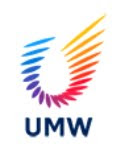New Copper Mine Moving Forward
28/12/2009 Arizona mine could begin yielding copper in 2012
Augusta Resource Corp. is reportedly moving ahead with its planned $900 million investment to mine the Rosemont copper-molybdenum deposit near Tucson, Ariz. The site could become the third-largest copper mine in the United States, although plans to mine the deposit have met with concerns from some local residents and environmental groups.
According to Industrial Info Resources (IIR), Sugar Land, Texas, the Rosemont mine could be up to full production in 2012. The open-pit Rosemont copper-molybdenum mine would then account for 10 percent of newly-mined copper output in the United States, producing 200 million pounds per year, plus 4.7 million pounds per year of molybdenum and 2.4 million ounces per year of silver.
The deposit has a resource base of 7.7 billion pounds of copper, 190 million pounds of molybdenum, and 80 million ounces of silver, giving it a likely life span of some 20 years in production.
Augusta Resource Corp., based in Vancouver, British Columbia, Canada, has been working with state and federal agencies on a draft Environmental Impact Statement likely to be released early in the second quarter of 2010. After public meetings and a comment period, a Record of Decision from review agencies is likely in the fourth quarter of 2010, according to IIR.
If Augusta receives its permits and regulatory approvals close to schedule, the company plans to begin construction by the end of the fourth quarter of 2010, with an anticipated completion date of late 2011 or early 2012.
“Not in my backyard” (NIMBY) sentiments from some environmental groups and people living near the proposed mine site have expressed concerns regarding groundwater supplies and contamination, extra traffic, dust, pollution, and disruption to the area’s ecosystem.
Among those groups, Save the Scenic Santa Ritas (SSSR) on its Web site, says its main focus is to prevent any mining from occurring in the areas of the Santa Rita Mountains, and to protect the Santa Ritas “from degradation due to mining activities.”
Augusta officials claim that they have developed an environmentally friendly mine plan designed in part to reduce its footprint “to less than half the size of current mines in the Tucson area,” according to the company’s Web site.
“This is a very complex and important project, and we appreciate the amount of diligence the [United States Forest Service] has undertaken in its analysis,” Augusta vice president for sustainable development Jamie Sturgess says in a company press release.
The current mine plan includes an onsite primary gyratory crusher followed by a semi-autogenous mill and ball grinding to remove more than 250,000 tons per day of non-ore bearing rock from a 1.2-square-mile pit. According to IRR, there also will be processing and support facilities, a dry-stack tailing disposal area, a heap-leach facility, a solvent extraction electrowinning (SX/EW) plant and rock storage areas.
Heavy equipment deployed at the site will include three 70-cubic-yard electric mining shovels; two 36-cubic-yard front-end loaders; 32 off-highway haul trucks weighing 320 tons each; five 580 to 850-horsepower crawler dozers; three 500-horsepower rubber-tired dozers; three 270-to 500-horsepower motor graders; and three 30,000-gallon off-highway water trucks.
IIR also reports that Augusta has signed a $29 million contract with Polysius Corp., a subsidiary of ThyssenKrupp AG, Dusseldorf, Germany, for the purchase and delivery of a SAG mill and two ball mills. The company also has signed a $42 million contract with ABB Switzerland Limited Zurich, for the supply of three gearless mills, plus an $8.6 million contract with Sandvik AB Sandviken, Sweden, for a primary crusher, and a $65 million contract with Bucyrus International, South Milwaukee, Wis., for three 495HR mining shovels.




0 comments:
Post a Comment